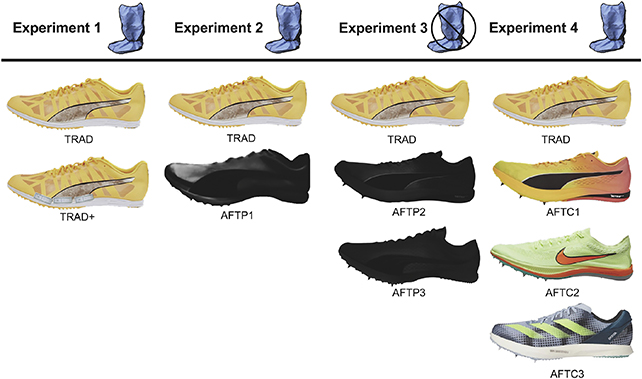Products You May Like
In the arms race over sportswear technology, an advanced form of footwear has recently disrupted the racing scene, giving short and long distance runners a distinct advantage.
New research shows that so-called ‘super spikes‘ on soles can also increase running speeds across middle distances by as much as 3.1 percent.
The international team of scientists behind the study wanted to take a closer look at the impact of these spikes – technically known as advanced footwear technology (AFT) – as their use at the elite level has become commonplace.
With world records continuing to tumble, there’s an interesting question to be answered here: are human beings getting faster, training harder, or using better equipment (such as super spikes) to continue to drive improvements?

“Super spikes have a thicker yet lighter, more resilient and more compliant midsole often combined with a stiff-carbon-fiber plate embedded in the midsole,” says University of Massachusetts biomechanical engineer Montgomery Bertschy.
Where sprints and long distance events have features that make factors like energy efficiency and speed easy to test in the lab and field, middle distance feats come with added complications, which means to date it’s hard to know if anecdotes over super spike superiority give all running methods a boost.
To get around these obstacles, super spike shoes were compared to standard track spike shoes in four separate experiments, each with 12 different participants, and all across distances of 200 meters with recovery periods in between.
Rather than going flat out, runners were asked to stick to their ‘race pace’ for 800 meter or 1,500 meter runs. The idea was to level out the amount of effort the athletes were putting in, in order to isolate the effects of the footwear.
The data showed several points of interest: AFT spikes showed an increase of around 2 percent in performance on average, though it varied depending on the runner and the brand of footwear. Running speed boosts ranged from 1.8 percent up to 3.1 percent, with athletes cutting their race times by as much as 5 seconds over the 1,500 meter events.
What’s more, the gains seemed to be due to a longer step length, rather than more steps. That’s an important point when assessing the difference shoes can make, and in making the best possible preparations for athletic tournaments like the Olympics.
“Historically, we can expect to see differences of less than 0.5 percent in race time determining who will win the gold, who will get silver, or will not make the podium,” says sport biomechanist Ethan Wilkie from the University of New Brunswick in Canada.
“Our 2 percent findings highlight that some of that might be because some people have slightly better shoes than others.”
Other studies on AFTs have suggested they’re more beneficial for women than for men, and make more of a difference over longer distances. Multiple studies consistently show super spike technology is only part of the story – the athlete’s speed, size, and choice of running shoe has an influence too.
Another 32 world records tumbled during the course of the Paris Olympics 2024, and with the competition stronger than ever, athletes will be continuing to look for any advantage they can get in driving performance improvements.
“Part of it is because the shoes are getting better and better, and we have evidence for that,” says University of Massachusetts kinesiologist Wouter Hoogkamer.
The research has been published in the Journal of Sport and Health Science.
